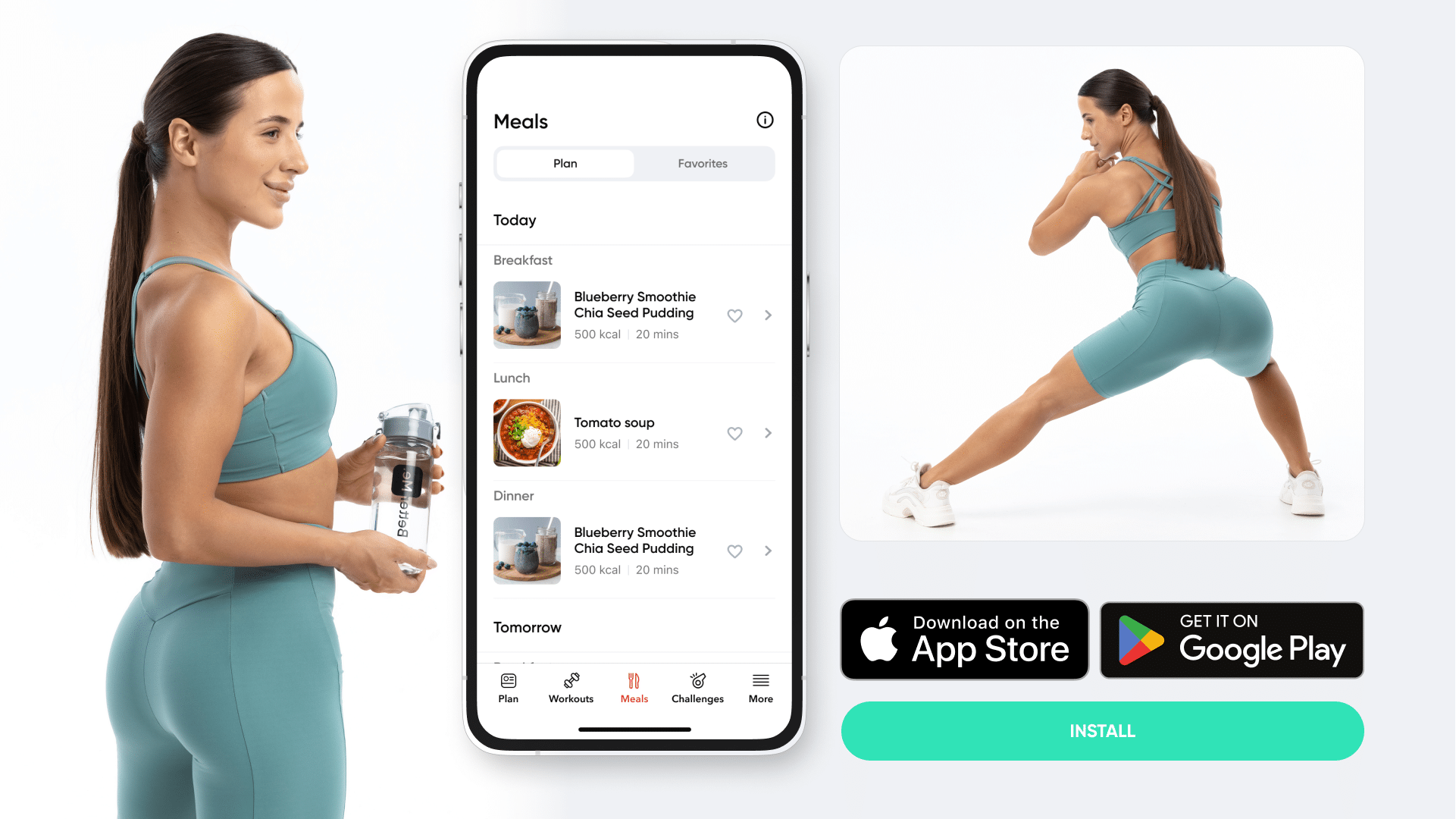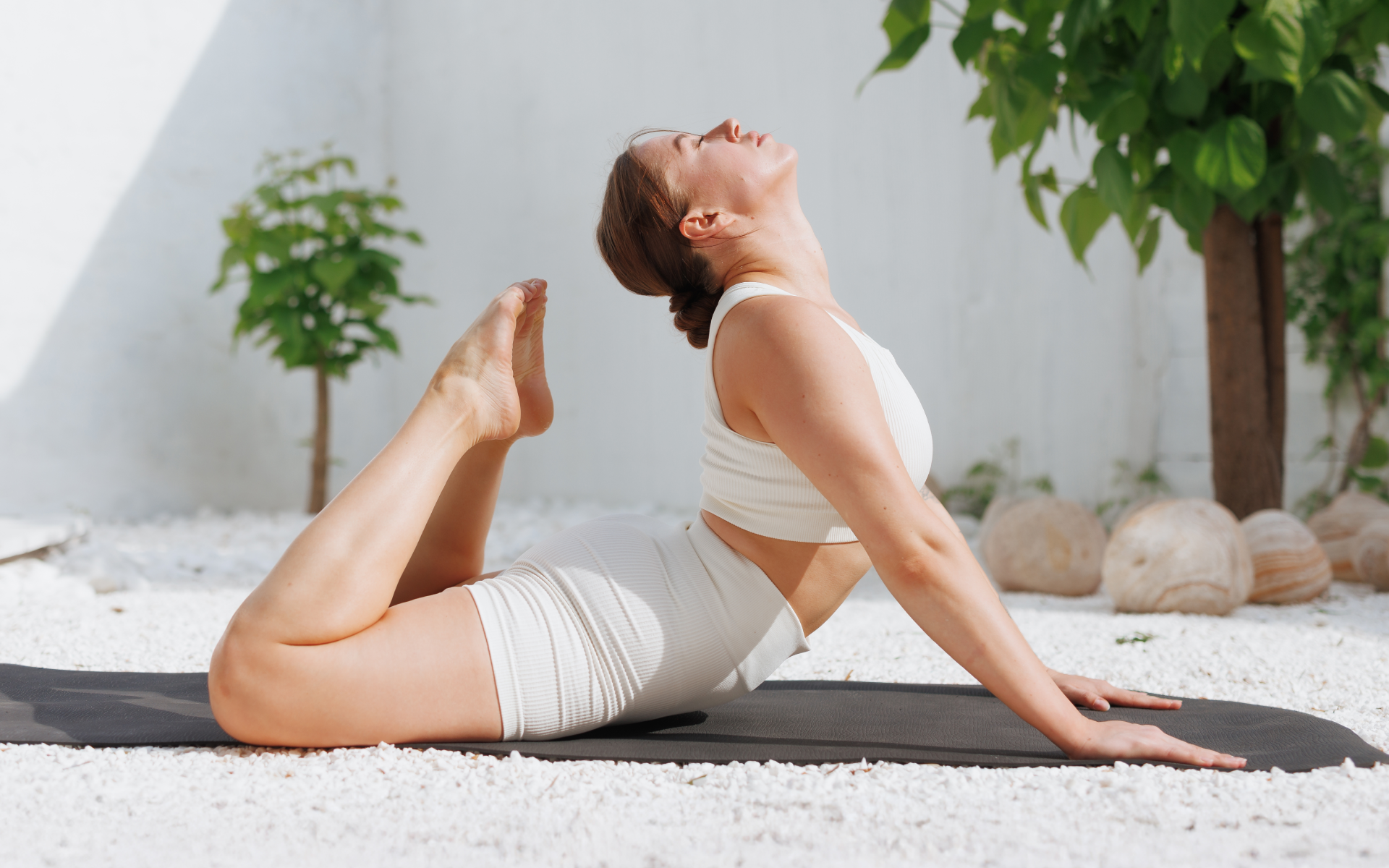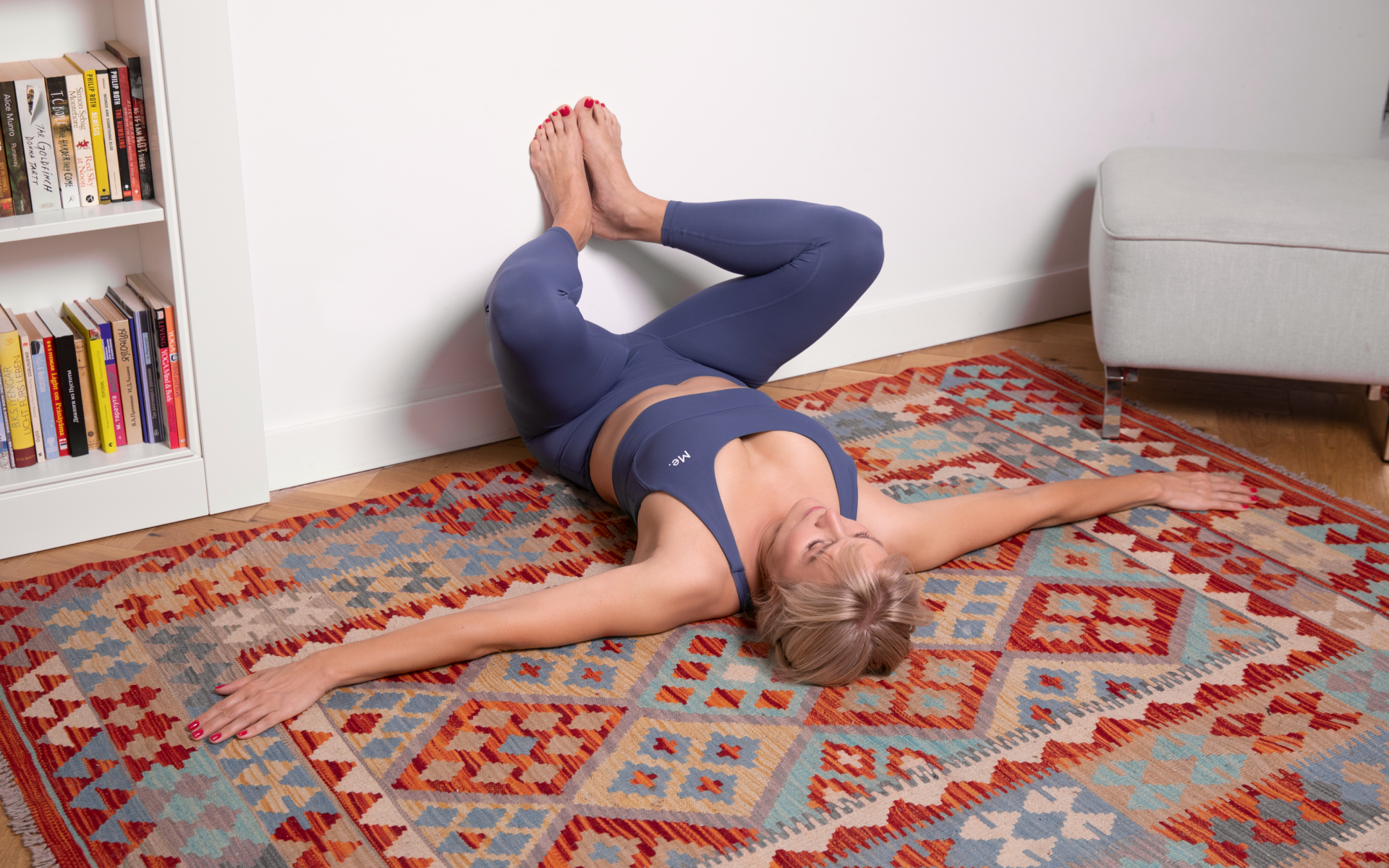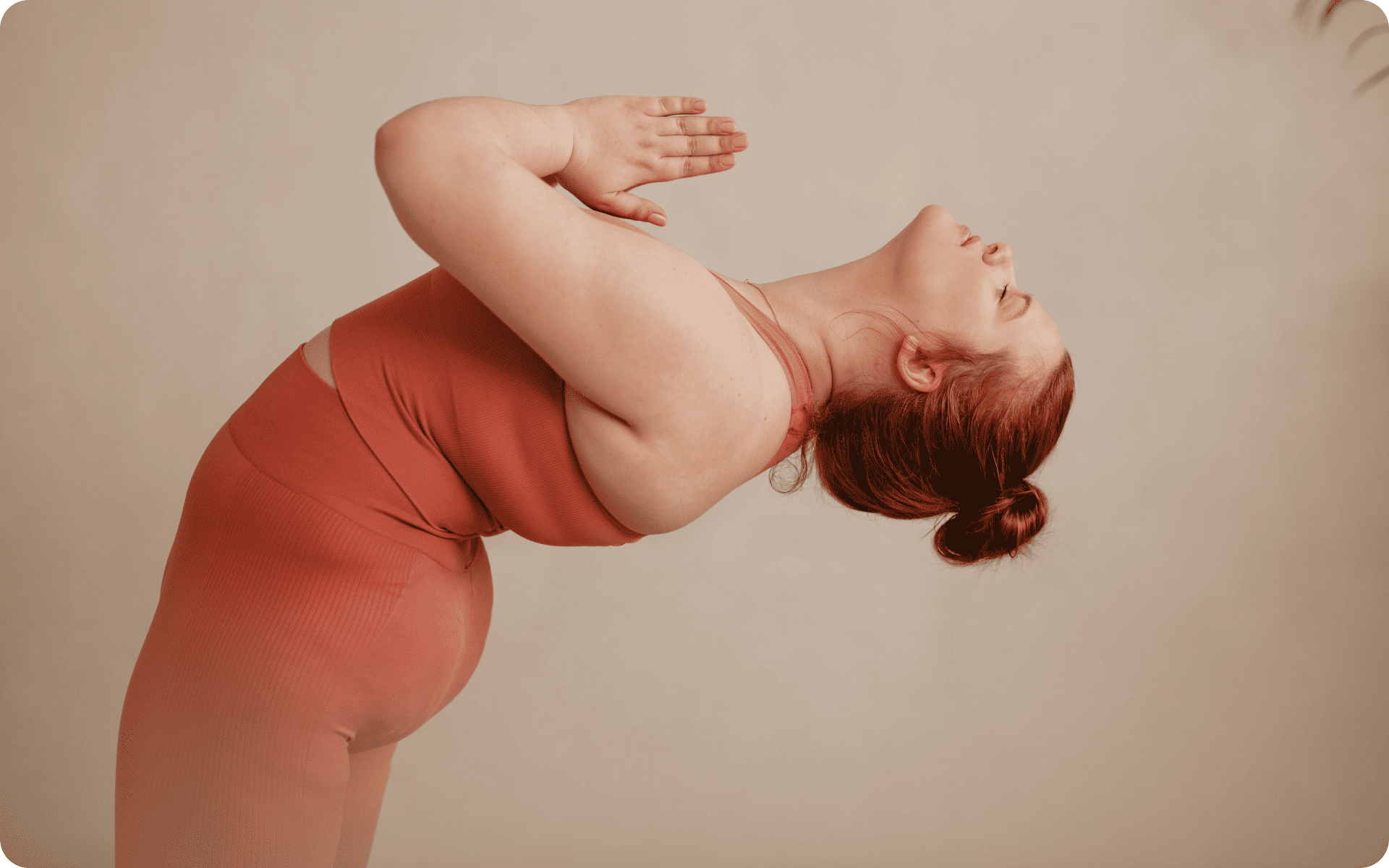No two people are alike. In Viniyoga, each pose and sequence is tailored specifically for you. You can adjust the practice according to your needs, limits, and purpose.
Alignment cues may greatly vary depending on factors such as health conditions, age, and experience. For example, if you have knee osteoarthritis and the posture requires a full squat, you can modify the practice or do a completely different movement.
As long as you don’t have any breathing problems, you can do Viniyoga. Here’s what to expect with this holistic healing discipline.
Introduction to Viniyoga
Viniyoga makes yoga accessible to everyone, not just those who are very flexible. It gives you the tools to customize your practice and takes into account your distinct mental and physical state.
Every individual has a unique personality, body and mind, memories, ways of thinking, reactions, and circumstances in life. They also respond differently to meditation. Viniyoga selects the proper tools of yoga, such as mantra, meditation, breathing, and movement.
Over time, a yoga therapist observes their student and modifies the practice. Every week as a student, you can experience unique variations of yoga postures, meditation goals, and structure.
What is Viniyoga?
Viniyoga is an approach to yoga where yoga therapists personalize practices to suit every student. It is a form of Hatha yoga. It synchronizes breath and movement in both static and dynamic asana (poses), incorporating meditation and pranayama (yogic breath regulation).
When you think about yoga, the first thing that probably comes to mind is perfect body alignment – learning how to align the spine, shoulders, head, ankles, knees, hips, and toes. However, many people tend to forget that the Yogis didn’t talk about this kind of alignment. They focused on aligning the body, breath, and mind. This is what we follow in the Viniyoga tradition.
The human body is constantly changing. You can experience different health problems as you age, such as muscle imbalances, obesity, musculoskeletal disorders, arthritis, neurological complications, and many more.
As a result, it’s almost impossible to keep every part of your body perfectly aligned all the time. This approach to yoga is also considered a form of ethnomedicine. It uses traditional practices from Indian culture to improve wellness. (1)
Intense sweat sessions, working weight loss tips, lip-smacking recipes come in one package with the BetterMe: Health Coaching app—all at your fingertips, start transforming your life now!
Origins and Philosophy: What Makes it Stand Out?
Viniyoga is one of the oldest traditions of yoga. Its lineage can be traced back to the 9th century to the Great Yogi Śri Nāthamuni. It is believed that his ancient and classical texts, the Yogarahasya (i.e. Secrets of Yoga), mysteriously disappeared. However, the knowledge was passed down from generation to generation.
It wasn’t until the legendary Tirumalai Krishnamacharya rediscovered the sacred texts that they became popular once again.
Yogi Krishnamacharya became the founder of modern yoga. He was one of the most influential gurus of the 20th century and made the practice and its philosophies available to the general public and spread it around India.
His son and successor, T. K. V. Desikachar, continued the legacy. He spread this holistic healing discipline around the world. The teachings of Nāthamuni are the main inspiration behind this tradition.
The origin is based on the concept that practitioners adapt all Viniyoga poses tailored to the needs of every student. The poses should be appropriate to their body type, psychological well-being, and purpose (or Dharma) in life. This allows students to become the best versions of themselves.
The 4 Core Principles You Should Know About
Every yoga tool, whether that’s yogi breathwork, asana, visualization, or Mantra, has a specific purpose. Viniyoga takes this purpose and incorporates various sequences to tailor the practice to your needs. Here’s a quick look at its four main principles.
Function Over Form
Most of us believe that a certain pose, career, or specific spiritual practice can provide the ultimate sense of peace, joy, and fulfillment. We believe these things can “fill in the blanks” about everything we’ve been searching for.
However, we fail to notice that the true meaning of peace can only come from within. That is one of the core principles of Viniyoga.
This practice focuses on function over form. It is less about what the form looks like from the outside and more about what’s happening on the inside. It’s here to provide functional wellness so you can keep practicing it with your changing emotional and mental state.
Movement with the Breath
The poses don’t need to be perfect; it’s the breathing that matters. Your breath becomes a compass. It commands the flow of every twist, stretch, and extension. With every cycle, you coordinate your body and guide the rhythm of your movements.
Breathing patterns are connected to the central nervous system. Mindful breathing may allow you to regulate your parasympathetic and sympathetic states. You can calm yourself in the present moment. (2)
Repetition and Stay
Holding a pose and changing a pose are both patterns we use when doing yoga. For example, you may be using repeated poses to warm up the muscles, but you’re also doing stretches to release tension and inflammation.
Viniyoga poses require repetition to boost blood flow to the muscles and contract the opposing muscles as you flex and stretch your body. The longer you remain in a pose and the more you repeat it, the easier it is to lengthen the muscles after a warm-up.
Art and Science of Sequencing
Sequencing helps release and prepare the body for every asana (pose). Every session gives a format you can follow when creating sequences. For example “I want to work on shoulder joint mobilization” or “I need to stretch my lower back”.
Using a sequence for a particular goal takes the practice from general-style yoga to a more targeted approach.
Read more: Japanese Yoga: A Deep Dive Into Mindful Movements
The Benefits of Regularly Practicing Viniyoga
This form of Hatha yoga can provide a range of mental and emotional benefits. Consistency is essential for cultivating a deeper sense of well-being.
Physical Benefits
- Promote flexibility: Every asana stretches the muscles. It can stimulate circulation and ease stiffness. (3)
- Increase breathing capacity: Coordinated inhalation and exhalation may help boost respiratory function. Slow breaths can help you hold your breath for longer and may strengthen the respiratory muscles. (4)
- Better sleep quality: Relaxation can boost melatonin levels and may help you fall asleep more quickly. You may feel the physical benefits of preventing daytime fatigue and sleepiness. (5)
- Pain relief: Stretches can improve mobility, circulation, and flexibility, and manage minor physical aspects that cause pain. (6)
- Enhance vitality and energy: Yoga can make you feel refreshed and rejuvenated. It can boost the hemoglobin levels and red blood cells.
Mental and Emotional Benefits
- Improve mental clarity: It can calm the mind, and reduce agitation, and stress. It can oxygenate the brain and promote mindfulness.
- Better concentration and focus: Concentrating on the breath draws the mind toward a single goal. It brings back the wandering thoughts and helps you become present in the moment.
- Spiritual growth: Every session teaches you how to achieve inner peace, practice acceptance, and foster a deeper connection with your authentic self.
- Achieve emotional balance: Regular practice can help you seek a positive outlook on life. It anchors you through meditation. In time, you can better understand your emotions.
- Enhances body awareness: Postures require controlled and coordinated actions from different parts of your body. You stretch and engage various muscle groups. The more you practice, the sooner you can become aware of your strengths and limits.
Practical Tips: How to Get Started with Viniyoga
In Viniyoga, you don’t practice asanas as a physical exercise. Instead, you bring the focus back to your breathing patterns. This is a breath-centered practice. Make your breathwork your number 1 priority to engage the mind.
Look for a certified teacher in your local area. You can get both private and group sessions. You can get started by learning the key elements of:
- Breath control: Yogi breathwork comprises meditation, chanting, and pranayama breathing. You learn to harmonize your breath and movement.
- Asana: There are various poses for beginners and advanced students. Every pose can be customized to attune to your skills, limits, and needs.
- Relaxation: Pay close attention to the emotional aspects of the discipline. It takes time to immerse yourself in the experience, so try to be consistent.
Basic Practices and Techniques
Every class is different. But, there are foundational practices and techniques you can encounter.
Vinyasa Krama (Breath-Centric Movement)
In yoga, a lot of people judge your progress by how you do a pose. Let’s say you do a forward bend, they see how far you can bend, how close the head is to your knees, and how straight your legs are. Many believe that the only measure of improvement is your flexibility.
But, according to T. K. V. Desikachar and Krishnamacharya, progress doesn’t mean perfecting the physical form. It means how well you can synchronize your breath while holding that pose. Breathwork should be leading your movement.
For example, in Uttanasana:
- You lift your arms and inhale. You then bend forward and exhale.
- Lift the body back up to the starting position and inhale. Then, lower the arms and exhale.
With practice, you work on the connection between each movement and breath. You learn to:
- Start the breath 1 to 2 seconds before you move.
- Extend the breath 1 to 2 seconds after the movement ends.
This creates a smooth link between your mind and body.
Gentle Restorative Poses
Viniyoga includes a wide range of poses, including balancing poses, forward bends, inversions, twists, backbends, standing poses, and seated poses.
Here is a restorative posture suitable for beginners.
Reclining Bound Angle Pose
In Viniyoga, you should make slow and mindful transitions in and out of every pose. You make subtle adjustments and let the breath guide you without sudden movements.
For example, after you settle into a pose, you can inhale and lift your chest to expand the ribcage, then exhale to deepen the posture.
How to do:
- Sit on the floor and place a folded blanket under your lower back.
- Tuck your chin in and roll back onto the blanket.
- Bend your knees and open your thighs.
- Let the soles of your feet touch.
- Place your hands flat on the ground with the palms facing upward.
- Close your eyes and take deep breaths.
To try other yoga poses, we suggest you check out these 7 Variations to Enhance Your Practice.
Essential Equipment
This practice doesn’t require any special equipment. However, you can make some personal adaptations with props that support alignment, and improve posture, and comfort, such as a mat, chair, blanket, strap, or blocks.
Whether you’re looking to simply pep up your fitness routine, jazz up your diet with mouth-watering low-calorie recipes or want to get your act together and significantly drop that number on your scale – BetterMe: Health Coaching app has got you covered! Improve your body and revamp your life!
Master the Art with Advanced Viniyoga Practices
As you gain more experience, you can do more complex poses and increase awareness between the body, breath, and mind.
Intermediate and Advanced Techniques
Your yoga teacher can guide you to explore deeper aspects of the practice beyond just the physical form. The poses are often sophisticated and can address a specific goal or need. You learn to combine movement and breath with mindfulness.
This guide can help if you need to practice Intermediate Yoga Poses.
Mudras and Bandhas
The classical Yogis didn’t practice yoga as a form of physical exercise, practicing it instead as a way to move prana in their bodies. Prana is a popular term that can be translated as “primary energy” or “life force”. In yoga, prana is often associated with the breath.
Throughout our lives, we can experience blockages in the flow of prana, whether on a conscious or unconscious level. Mudras are a valuable tool for restoring the movement of prana. When prana flows freely, we can unleash our full potential.
Mudras are symbolic gestures you often practice with the fingers and hands. Bandhas can refer to the energy locks in different parts of your body.
The process requires consistent effort and careful guidance. When we use mudras and bandhas together, we create a sophisticated system of visualization and breathwork. We can touch different layers of our subconscious, and harness the power within us.
Mantra Chanting
Mantras or sacred vibrational chants are an integral component of Viniyoga. Repeating a mantra can help release blockages and worries of the mind. This form of meditation can raise the vibrations and energy within the mind and body. It can lead to tranquility and a sense of peace.
The goal is to learn to repeat the mantra for a specific amount of time and coordinate it with the breath. Traditionally, legendary Yogis used prayer beads when chanting.
Customizing Your Practice
Viniyoga requires an individualized approach.
A yoga teacher considers your:
- Physical condition (i.e. flexibility, range of motion, natural body structure)
- Injuries or health problems (i.e. high blood pressure, arthritis, back pain, etc.)
- Age
- Mental and emotional state (i.e. anxiety, stress, depression, lack of motivation, lethargy)
- Personal goals
- Daily habits
- Spiritual focus (i.e. breathwork, chanting, mindfulness)
Integrating Viniyoga into Your Daily Life
To reap the benefits of Viniyoga, try to practice mindfulness habits. To get started, we suggest you check out our guide on Mindfulness for Beginners. You can then combine this practice with other activities.
Developing a Routine
The habits below can help you create a daily Viniyoga routine:
- Set a proper sleeping schedule.
- Try to fit at least 20 to 30 minutes a day for yoga practice.
- Begin with low- to moderate-impact poses.
- Set goals. If you need stress relief, do some calming postures.
- Gradually increase the asana practice.
- Be flexible and adapt. Adaptation allows you to practice for longer and manage all the pitfalls.
Combining Viniyoga with Other Activities
You can use Viniyoga to complement other activities, such as weight lifting, cycling, or running. Yoga poses can warm up or cool down the muscles. This can help with muscle recovery, boost flexibility, and prevent injury.
Common Mistakes and How to Avoid Them
Simple asana poses are incredibly comfortable and safe. However, as with any other mental and physical discipline, there are some things you should avoid.
Overexertion and Safety Precautions
Many practitioners want results and they want them fast, so they do a deeper stretch and advanced poses even if they’re not ready for them. This can cause muscle strain, joint problems, and injury.
To prevent this:
- Scale back the movements if they cause discomfort.
- Use props, such as blankets or straps.
- Align your breath with the movements.
Maintaining Consistency
Have a specific area where you can practice yoga regularly. Set short-term goals and mix up your routine with different poses.
Read more: Yoga for Moms Who Need a Break: A Simple Guide
FAQs
Is Viniyoga suitable for everyone?
Yes. Anyone can do Viniyoga because a teacher can adapt the practice to their needs. It’s versatile and highly customizable.
What should I wear for a Viniyoga session?
Choose clothes that allow a full range of motion. Breathable and comfortable fabrics work well.
How often should I practice Viniyoga?
It depends on your goals, schedule, and needs. Beginner practitioners often practice 2-3 times a week. However, advanced practitioners tend to practice daily.
The Bottom Line
From physical health to mental clarity, there are a myriad of benefits of Viniyoga. If you’ve never tried it before, you can start with basic poses and then progress at your own pace. Don’t forget to track your progress and enjoy this enlightening journey.
DISCLAIMER:
This article is intended for general informational purposes only and does not serve to address individual circumstances. It is not a substitute for professional advice or help and should not be relied on for making any kind of decision-making. Any action taken as a direct or indirect result of the information in this article is entirely at your own risk and is your sole responsibility.
BetterMe, its content staff, and its medical advisors accept no responsibility for inaccuracies, errors, misstatements, inconsistencies, or omissions and specifically disclaim any liability, loss or risk, personal, professional or otherwise, which may be incurred as a consequence, directly or indirectly, of the use and/or application of any content.
You should always seek the advice of your physician or other qualified health provider with any questions you may have regarding a medical condition or your specific situation. Never disregard professional medical advice or delay seeking it because of BetterMe content. If you suspect or think you may have a medical emergency, call your doctor.
SOURCES
- Beyond Scientific Mechanisms: Subjective Perceptions with Viniyoga Meditation (2019, ncbi.nlm.nih.gov)
- Take a Deep Breath (2023, ncbi.nlm.nih.gov)
- Improvement in muscular strength, body flexibility and balance by yoɡasana and with reduced detraining effects by yoɡa breathing maneuvers: A non-randomized controlled study (2024, ncbi.nlm.nih.gov)
- The Effects of Yoga Practice on Lung Function and sIL-2R Biomarkers in Individuals Working and Living in the Lonavala Industrial Area: A Randomized Controlled Trial (2023, ncbi.nlm.nih.gov)
- Tailored individual Yoga practice improves sleep quality, fatigue, anxiety, and depression in chronic insomnia disorder (2022, biomedcentral.com)
- Yoga for chronic non-specific low back pain (2022, ncbi.nlm.nih.gov)











